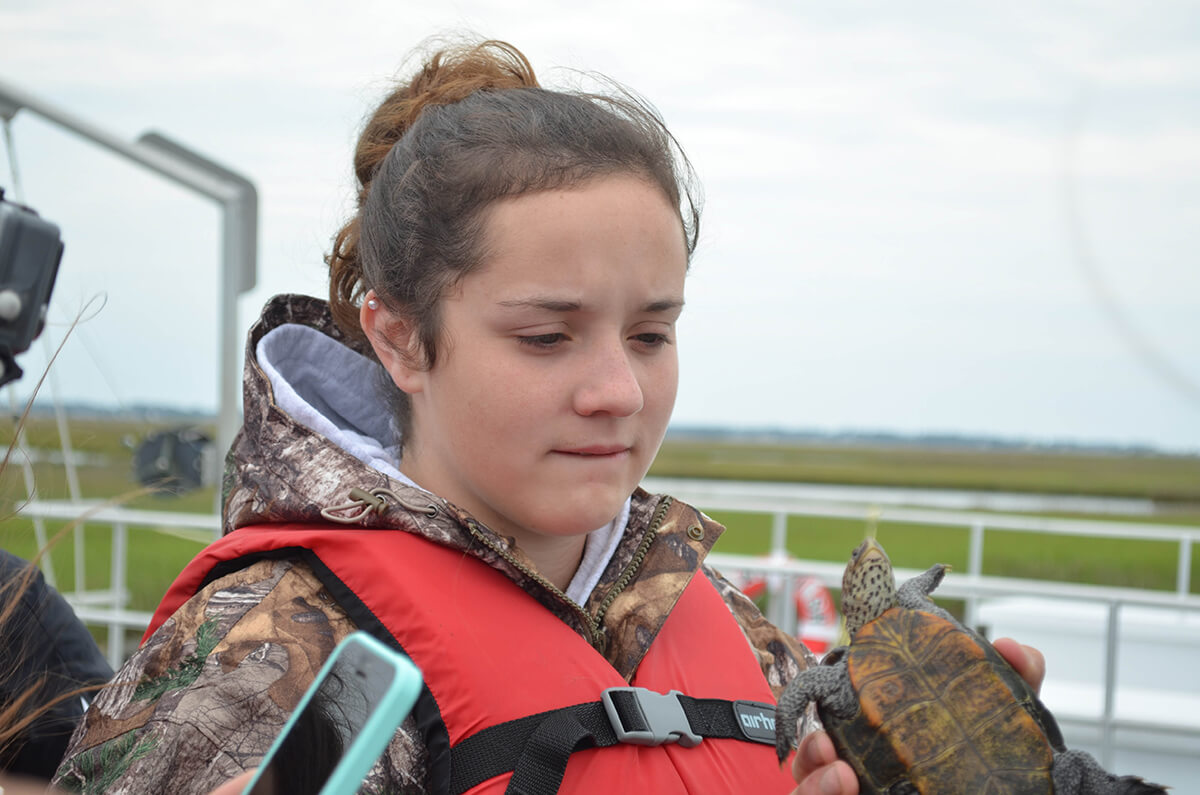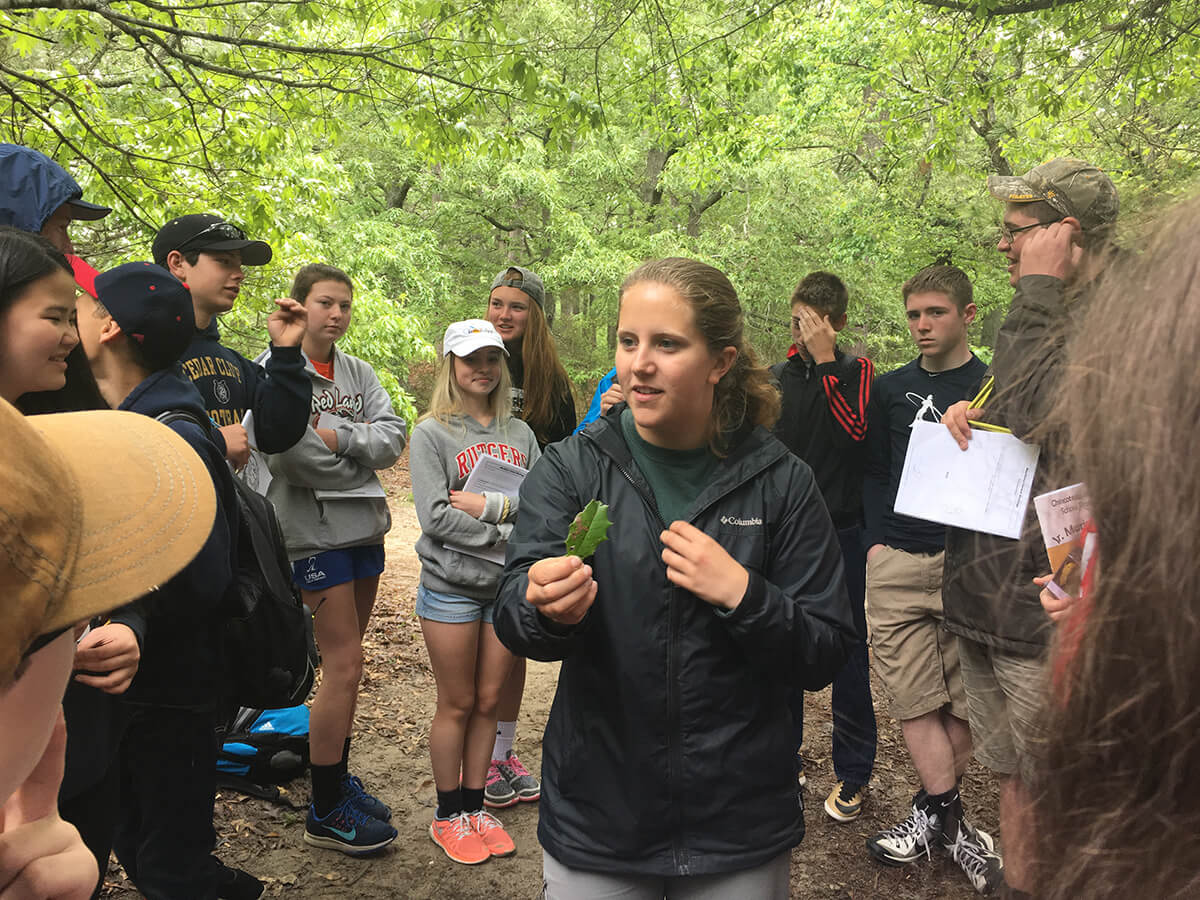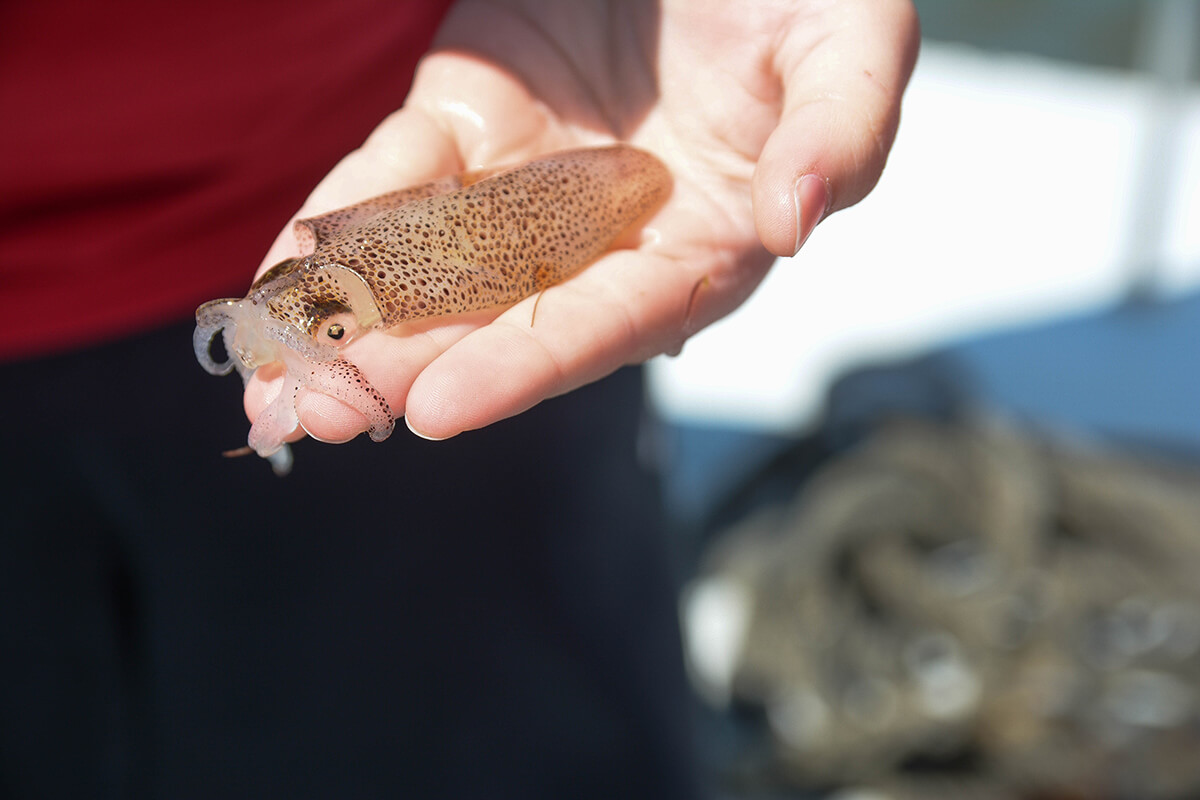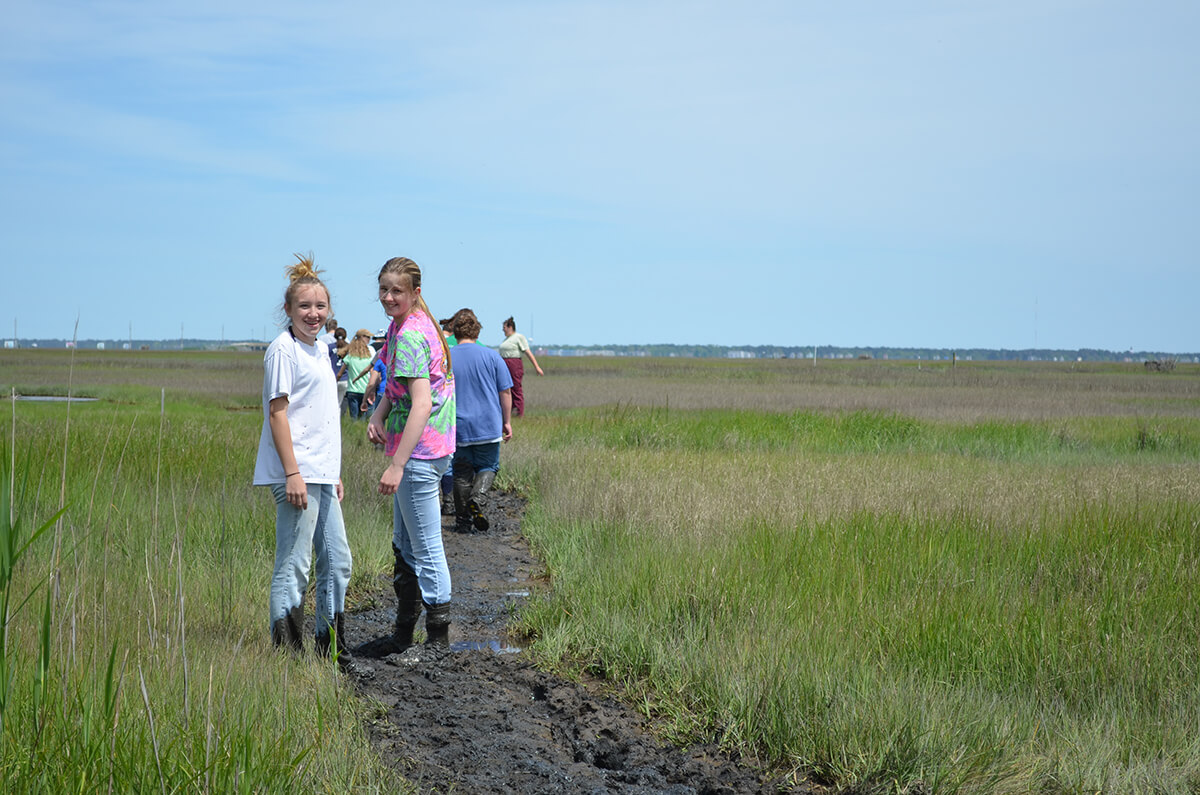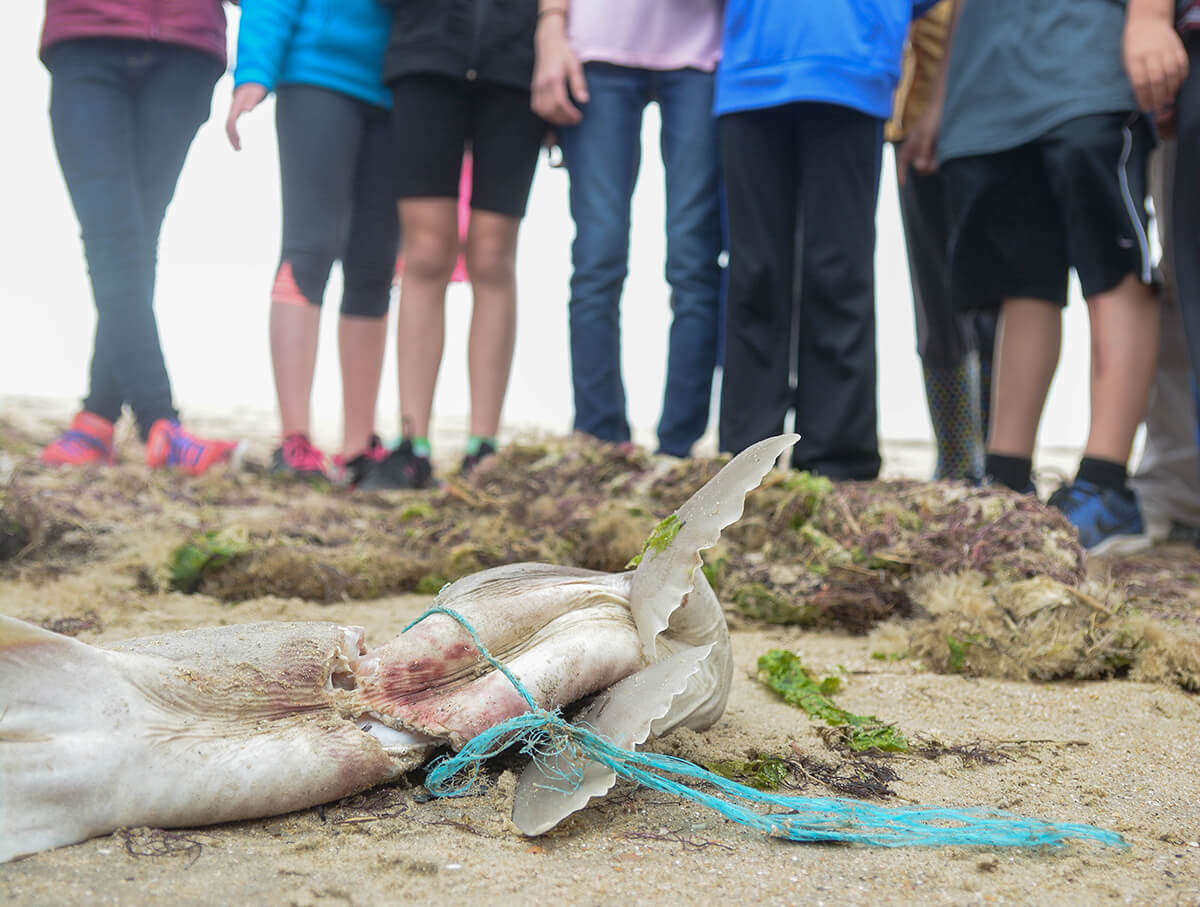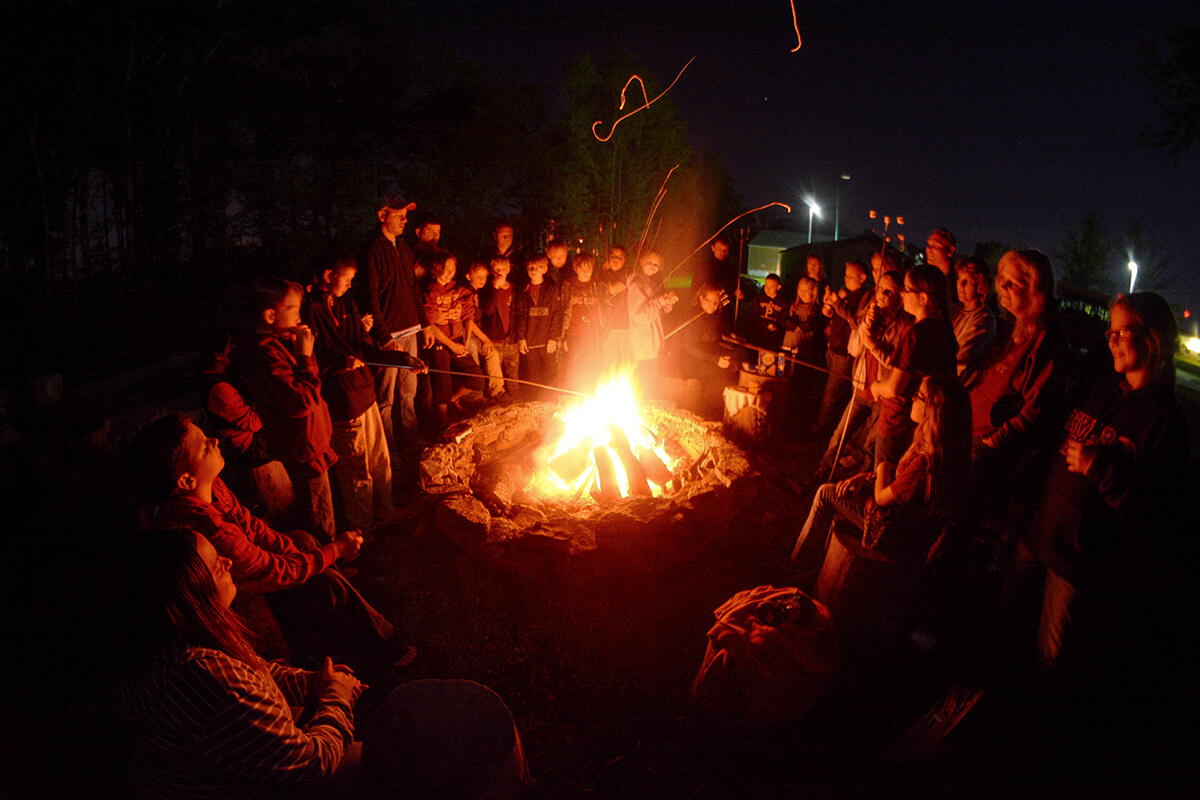Taxa are the many different groups biologists use to classify living things. Some are large – like Animalia, the animal kingdom – and others are smaller – like Callinectes, the genus to which the Atlantic blue crab belongs. At Chincoteague Bay Field Station, students can experience all types of organisms from across many different taxa found right here on the Eastern Shore.
Reptilia
is a class of vertebrate animals that lay their eggs on land. Examples include birds, lizards, snakes, and turtles. When trawling along the bottom of Mosquito Creek, students from Titusville Middle School found a diamondback terrapin, the only turtle species in North America that lives in brackish water. Students took turns holding and taking pictures with their new reptilian friend before releasing it back into the water.
Domain: Eubacteria
Eubacteria is a domain that contains many varied types of single-celled organisms. Some produce their food through photosynthesis, some consume other organisms, and others are decomposers, which recycle nutrients in an ecosystem. Sam, one of the Field Station’s educators, showed a bacterial colony to a group of eighth graders from Allen Middle School during their Maritime Forest trip, where students split up into groups and looked for other types of decomposers in the ecosystem.
Phlyum: Mollusca
The phylum Mollusca is comprised of soft-bodied invertebrates that excrete a hard shell from their mantle. In their live organism lab, students from Danville High School were surprised to find that squids are part of this phylum. One student said, “I had never seen one of those before. The texture of it and the squishiness of it was really odd to hold in real life.”
Informal Division: Angiosperm
Scientists are constantly uncovering the way different organisms are related to each other. That means there can be some debate in terms of how to classify types of life. Angiosperms, or flowering plants, were once considered a phylum, but are now just a handy way to categorize plants with flowers and a special layer called an endosperm in their seeds. Salt Marsh Cordgrass, which can be found all over the area’s marshes, is a part of this informal classification. (Yes, cordgrass has flowers. They’re just very small!) Students from Green Acres School explored how the grasses turn into peat when they visited Chincoteague’s marsh ecosystem.
Species: Homo sapiens
Homo sapiens is a very intelligent species of primate with advanced social structures and technology. For better or worse, H. sapiens has impacted the planet in a variety of ways. The species unfortunately creates large amounts of waste, which – if not disposed of properly – can damage other organisms and their habitats. Fifth graders from Young Scholars Charter School experienced this damage first hand on a Marine Debris trip to Wallops Island, where they collected five bags of trash.
However, the H. sapiens species also has a remarkable ability to make connections to other orgasms and each other. Fourth and fifth graders from Evangelical Heights Christian Academy discussed these connections around a campfire on their free night. Of all the organisms that call the Eastern Shore home, humans have the greatest impact and capacity for learning.
Chincoteague Bay Field Station, located on the Eastern Shore of Virginia, offers programs for schools, home school students, college students, adults and more. Visit our website to learn more and to plan your next adventure.

